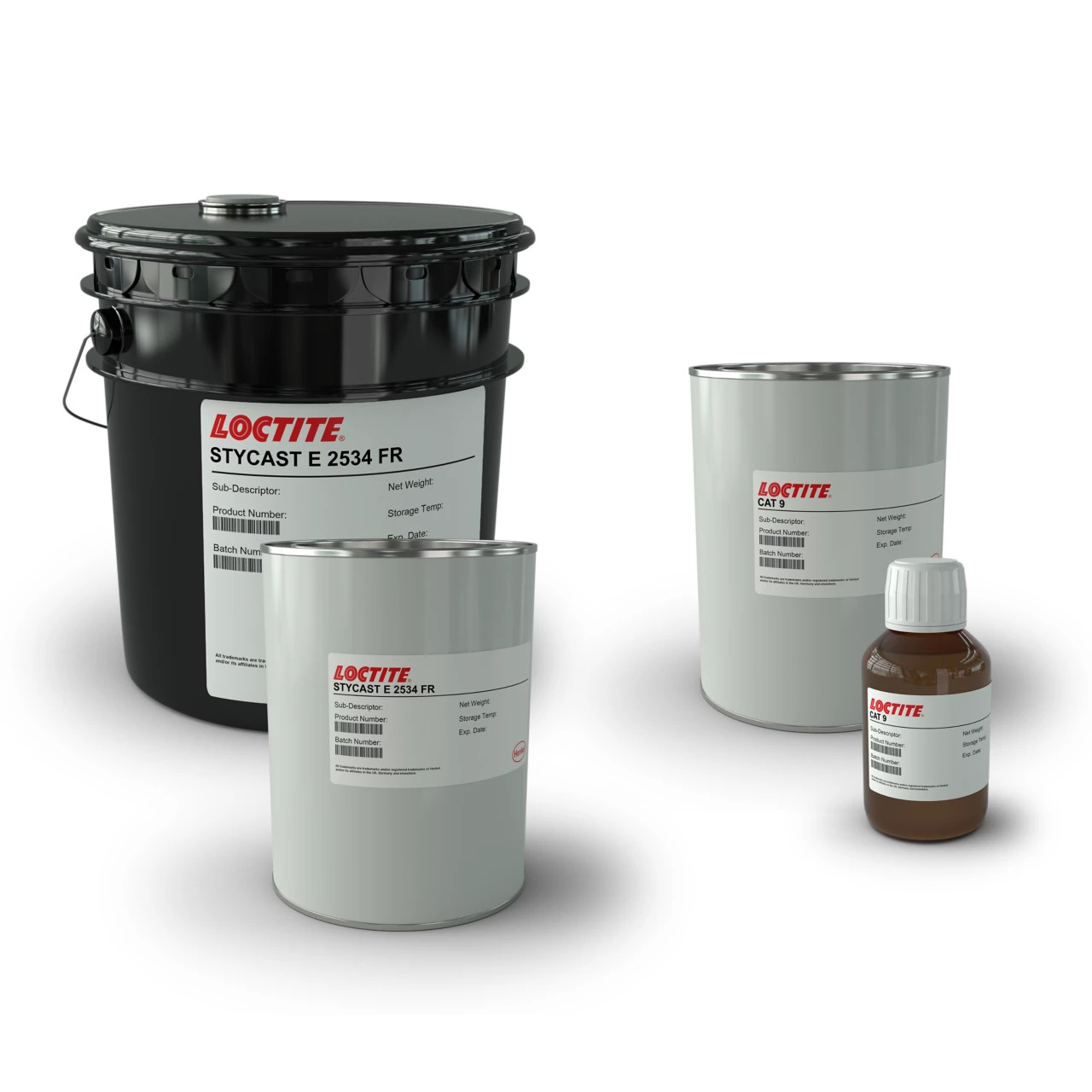LOCTITE STYCAST E2534FR
Harmonization Code : 3907.30.00.90 | Polyacetals, other polyethers and epoxide resins, in primary forms; polycarbonates, alkyd resins, polyallyl esters and other polyesters, in primary forms : Epoxide resins : Other
Main features
- Flame retardant
- Halogen free
- High thermal conductivity
Product Description
LOCTITE STYCAST E 2534 FR epoxy potting compound complies with recent demands on environmentally friendly products and does not contain brominated flame retardants. It is a two-component epoxy that can be used in a 100:4 ratio with catalysts such as CAT 9. It can achieve a continuous operating temperature of -40 to 130°C and an intermittent of -40 to 150°C.
LOCTITE STYCAST E 2534 FR can be used with a variety of catalysts. For more information on mixed properties when used with other available catalysts, please contact your local technical service representative for assistance and recommendations.
Recommended Cure Schedule
- 16 to 24 hours @ 25°C or
- 2 hour @ 65°C
Technical Specifications
| General Properties | |||||||||||
| Specific Gravity Specific Gravity Specific gravity (SG) is the ratio of the density of a substance to the density of a reference substance; equivalently, it is the ratio of the mass of a substance to the mass of a reference substance for the same given volume. For liquids, the reference substance is almost always water (1), while for gases, it is air (1.18) at room temperature. Specific gravity is unitless. | 2.1 | ||||||||||
| Physical Properties | |||||||||||
| Viscosity Viscosity Viscosity is a measurement of a fluid’s resistance to flow. Viscosity is commonly measured in centiPoise (cP). One cP is defined as the viscosity of water and all other viscosities are derived from this base. MPa is another common unit with a 1:1 conversion to cP. A product like honey would have a much higher viscosity -around 10,000 cPs- compared to water. As a result, honey would flow much slower out of a tipped glass than water would. The viscosity of a material can be decreased with an increase in temperature in order to better suit an application | 350,000 mPa.s | ||||||||||
| Chemical Properties | |||||||||||
| Water Absorption | 0.03 % | ||||||||||
| Mechanical Properties | |||||||||||
| |||||||||||
| |||||||||||
| Thermal Properties | |||||||||||
| |||||||||||
| Glass Transition Temperature (Tg) Glass Transition Temperature (Tg) The glass transition temperature for organic adhesives is a temperature region where the polymers change from glassy and brittle to soft and rubbery. Increasing the temperature further continues the softening process as the viscosity drops too. Temperatures between the glass transition temperature and below the decomposition point of the adhesive are the best region for bonding. The glass-transition temperature Tg of a material characterizes the range of temperatures over which this glass transition occurs. | 76 °C | ||||||||||
| Thermal Conductivity Thermal Conductivity Thermal conductivity describes the ability of a material to conduct heat. It is required by power packages in order to dissipate heat and maintain stable electrical performance. Thermal conductivity units are [W/(m K)] in the SI system and [Btu/(hr ft °F)] in the Imperial system. | 1.5 W/m.K | ||||||||||
Additional Information
What is the difference in viscosity if we use different catalysts?
- CAT 9 TDS mentions only part A having 350.000 cPs, and no mixed viscosity (estimated around 33.000 cPs)
- CAT 24LV TDS mentions only the MIXED viscosity around 3.300 cPs, resulting in about 10 times lower viscosity vs CAT 9



